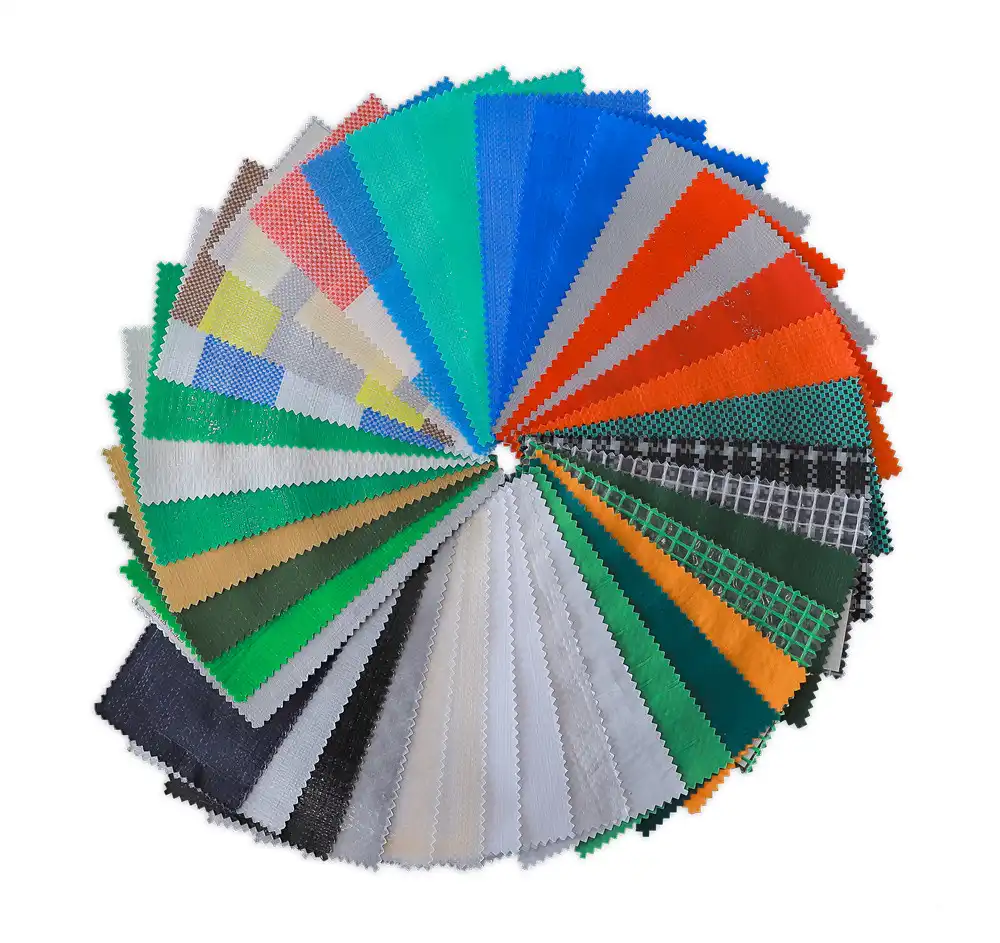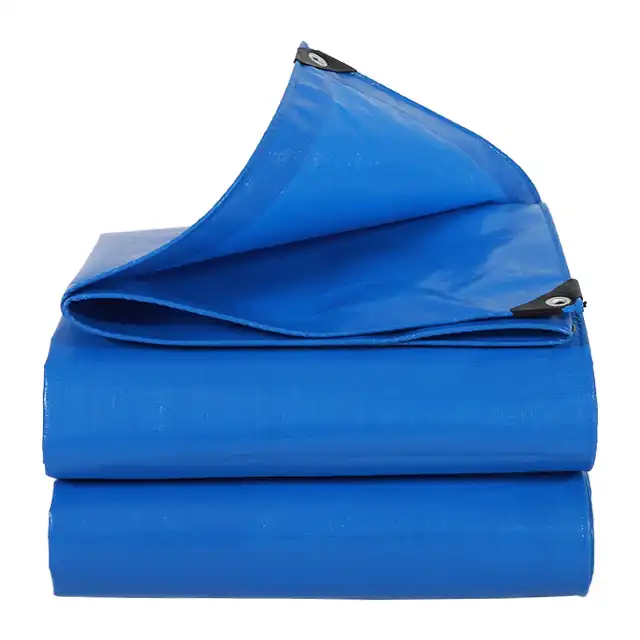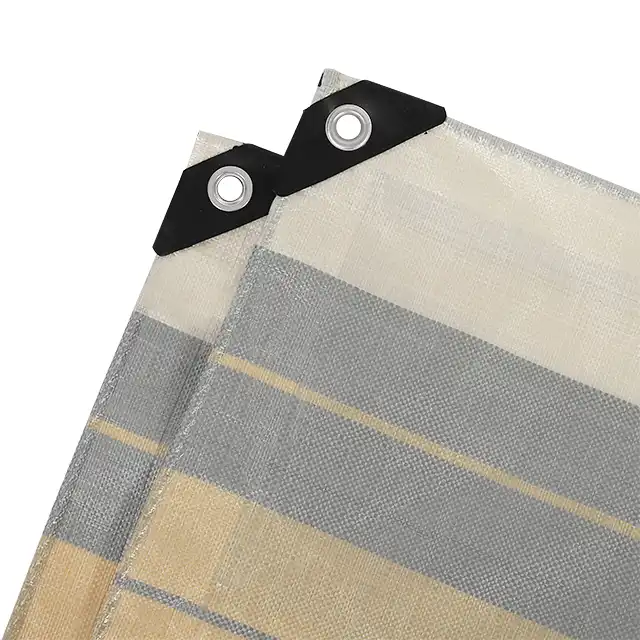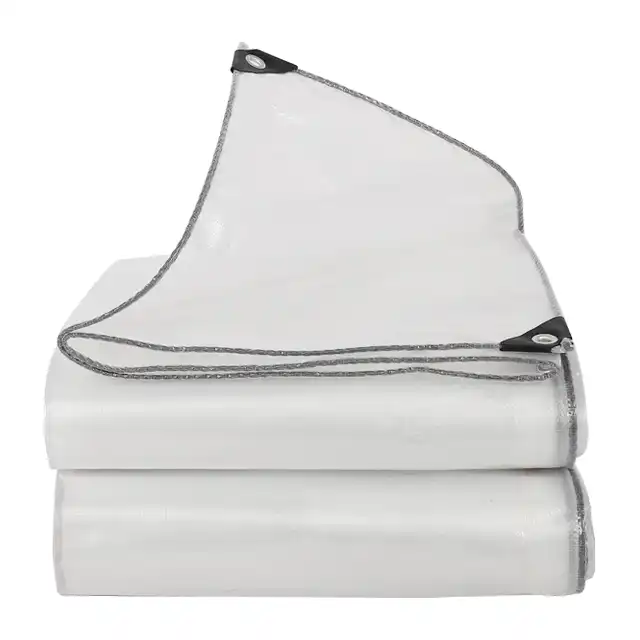Tarpaulin vs. Tents: Which Offers Better Outdoor Shelter
When venturing into the great outdoors, choosing the right shelter can make the difference between a memorable adventure and a miserable experience. The age-old debate of tarpaulins versus tents continues to divide outdoor enthusiasts worldwide. Both options offer unique advantages for different situations, but understanding their distinct characteristics can help you make an informed decision for your next outdoor excursion. Tarpaulins, often underestimated in their versatility and functionality, provide remarkable protection against the elements while offering customization options that many traditional tents simply cannot match. From lightweight backpacking to extended camping trips, the right shelter solution depends on your specific needs, environmental conditions, and personal preferences.
Core Differences Between Tarpaulins and Tents
Material Composition and Durability
 Tarpaulins and tents differ significantly in their material composition, which directly impacts their durability and performance in various environmental conditions. High-quality tarpaulins, like those manufactured by Linyi Shengde Plastic Co., Ltd., utilize advanced materials that offer superior resilience against harsh weather conditions. Their tarpaulins are specially made from super strong, tightly woven polyethylene (PE) fibers that are woven into fabric and then laminated on both sides. This construction method creates a durable and lightweight heavy-duty poly tarp that provides exceptional protection from the elements. The high-density polyethylene construction ensures that these tarpaulins remain waterproof even during heavy downpours, making them ideal for regions with unpredictable weather patterns. Additionally, Sendow Tarpaulins incorporate high-strength yarn with extra UV protection against harmful sun rays and fading, extending their lifespan significantly compared to standard camping tents that often deteriorate quickly under constant sun exposure. The materials used in modern tarpaulins also offer impressive tear resistance, ensuring they can withstand the rigors of outdoor use without developing holes or rips that would compromise their protective capabilities. With weights ranging from 65gsm to 280gsm, users can select the appropriate thickness based on their specific requirements, whether they need a lightweight option for backpacking or a heavier, more robust solution for long-term shelter construction.
Tarpaulins and tents differ significantly in their material composition, which directly impacts their durability and performance in various environmental conditions. High-quality tarpaulins, like those manufactured by Linyi Shengde Plastic Co., Ltd., utilize advanced materials that offer superior resilience against harsh weather conditions. Their tarpaulins are specially made from super strong, tightly woven polyethylene (PE) fibers that are woven into fabric and then laminated on both sides. This construction method creates a durable and lightweight heavy-duty poly tarp that provides exceptional protection from the elements. The high-density polyethylene construction ensures that these tarpaulins remain waterproof even during heavy downpours, making them ideal for regions with unpredictable weather patterns. Additionally, Sendow Tarpaulins incorporate high-strength yarn with extra UV protection against harmful sun rays and fading, extending their lifespan significantly compared to standard camping tents that often deteriorate quickly under constant sun exposure. The materials used in modern tarpaulins also offer impressive tear resistance, ensuring they can withstand the rigors of outdoor use without developing holes or rips that would compromise their protective capabilities. With weights ranging from 65gsm to 280gsm, users can select the appropriate thickness based on their specific requirements, whether they need a lightweight option for backpacking or a heavier, more robust solution for long-term shelter construction.
Versatility and Adaptability
The versatility of tarpaulins sets them apart from conventional tents in numerous ways. Unlike tents, which typically have predetermined shapes and designs, tarpaulins offer unparalleled flexibility in configuration. This adaptability allows outdoor enthusiasts to customize their shelter based on the specific environmental challenges they face. For example, a tarpaulin can be configured as a simple A-frame shelter in mild conditions, a lean-to against driving rain, or even a fully enclosed shelter in extreme weather. Sendow Tarpaulin products come in various sizes upon request, with roll widths up to 5.1 meters, allowing users to select the perfect dimensions for their needs. The adaptability extends beyond shape configurations to include multiple usage scenarios. Tarpaulins serve excellently as truck covers, car canopies, sun shade covers, picnic pads, leisure tents, greenhouse fabrics, impermeable tarps for aquaculture, and irrigation hoses. This multifunctionality means that a single tarpaulin can replace several specialized pieces of equipment, offering significant value for outdoor enthusiasts. Moreover, the arctic flexibility feature of quality tarpaulins ensures they remain pliable even in freezing temperatures, unlike many tent materials that become brittle and prone to damage in cold weather. The anti-freezing, anti-corrosion, and shrink-proof properties of professional-grade tarpaulins make them suitable for year-round use in diverse climates, from scorching deserts to freezing mountain environments. This level of versatility simply cannot be matched by traditional tents with their fixed designs and seasonal limitations.
Cost-Effectiveness and Longevity
When considering outdoor shelter options, cost-effectiveness becomes a crucial factor, and tarpaulins offer significant advantages in this area. High-quality tarpaulins, particularly those manufactured with stringent quality control like Sendow Tarpaulins, provide exceptional longevity compared to many commercial tents. The middle-duty PE tarpaulins from Linyi Shengde Plastic Co., Ltd. feature weights ranging from 100gsm to 180gsm with mesh counts of 10x10 to 14x14, creating a robust product that withstands repeated use. This durability translates to remarkable cost savings over time, as a single well-made tarpaulin can outlast several cheaper tents that typically deteriorate after a few seasons of regular use. The economic advantage becomes even more apparent when considering the multipurpose nature of tarpaulins, which eliminates the need to purchase separate protective covers for different applications. One tarpaulin can serve as a ground cloth, rain fly, equipment cover, and emergency shelter, replacing multiple specialized items. The maintenance requirements and repair costs also favor tarpaulins significantly. While damaged tents often require complex repairs or complete replacement, tarpaulins with their simpler construction can be easily patched or repaired with basic materials. Furthermore, the industrial-grade materials used in Sendow Tarpaulins, including HDPE woven fabric with LDPE coating and UV treatment ranging from 1% to 7%, ensure they maintain their protective properties even after years of exposure to harsh environmental conditions. This longevity, combined with reasonable initial investment costs, makes tarpaulins an economically sound choice for outdoor enthusiasts seeking reliable shelter solutions without continuously replacing deteriorating equipment.
Environmental Considerations and Performance
Weather Resistance Capabilities
When facing unpredictable outdoor conditions, the weather resistance capabilities of your shelter become paramount. Tarpaulins excel in this domain, particularly in rainfall protection. The 100% waterproof nature of quality tarpaulins, such as those produced by Linyi Shengde Plastic Co., Ltd., ensures complete protection from precipitation. The specialized manufacturing process involving HDPE woven fabric with LDPE coating creates a waterproof barrier that prevents water penetration even during sustained heavy rainfall. This is a significant advantage over many tents, which may eventually leak at seams or where rainfly coverage is inadequate. Professional-grade tarpaulins also offer superior wind resistance when properly secured. The reinforced edges and strategically placed grommets found in Sendow Tarpaulins allow for secure anchoring that prevents billowing and potential damage during strong winds. The tear-resistant properties of these tarpaulins, achieved through high-strength yarn construction, ensure they maintain structural integrity even when exposed to forceful gusts that might damage conventional tent materials. Furthermore, the UV treatment applied to Sendow Tarpaulins (ranging from 1% to 7%) provides crucial protection against solar degradation, which is particularly important for extended outdoor use. This UV resistance prevents the material from becoming brittle or discolored over time, maintaining both functionality and aesthetic appeal even after prolonged sun exposure. The combination of these weather-resistant properties creates a shelter option that performs reliably across diverse environmental conditions, from desert heat to mountain storms, making tarpaulins an excellent choice for those who frequently encounter challenging weather during their outdoor activities.
Ventilation and Temperature Management
Effective ventilation and temperature management are crucial aspects of outdoor shelter performance where tarpaulins demonstrate distinct advantages over traditional tents. The highly configurable nature of tarpaulin setups allows users to optimize airflow based on environmental conditions, a feature particularly valuable in hot, humid climates where proper ventilation prevents condensation buildup and maintains comfortable interior temperatures. Unlike enclosed tents that can become stifling in warm weather, tarpaulin shelters permit continuous air circulation while still providing essential protection from precipitation and UV exposure. This superior ventilation capability is enhanced by the material properties of quality tarpaulins like those manufactured by Linyi Shengde Plastic Co., Ltd., which maintain structural integrity without trapping heat. The specialized polyethylene construction of Sendow Tarpaulins, with weights ranging from 65gsm to 280gsm, creates a barrier against rain and wind while allowing enough breathability to prevent the greenhouse effect common in poorly ventilated tents. This balance is particularly valuable during summer camping or in tropical environments where heat management is essential for comfort and safety. Furthermore, the versatility of tarpaulin configurations facilitates adaptation to changing temperature conditions throughout the day. During hot afternoons, a tarpaulin can be set up to maximize shade and airflow, while the same tarpaulin can be reconfigured for greater protection and heat retention as temperatures drop at night. This adaptability, combined with the anti-freezing properties of quality tarpaulins, enables comfortable shelter in diverse climates without requiring multiple specialized equipment pieces. For outdoor enthusiasts facing variable temperature conditions, the superior ventilation and temperature management capabilities of tarpaulins offer a significant advantage over traditional tents with their fixed ventilation systems.
Environmental Impact and Sustainability
The environmental impact and sustainability of outdoor gear have become increasingly important considerations for conscientious adventurers. In this context, tarpaulins offer several advantages worth examining. High-quality polyethylene tarpaulins, like those produced by Linyi Shengde Plastic Co., Ltd., demonstrate remarkable longevity that reduces the frequency of replacement and subsequent waste generation. This durability factor is particularly relevant when comparing the lifecycle environmental impact of shelters. While tents often require replacement every few seasons due to fabric deterioration, zipper failures, or pole breakage, a well-maintained tarpaulin can provide protection for many years, reducing the overall resource consumption associated with shelter solutions. The manufacturing process of Sendow Tarpaulins emphasizes resource efficiency, with their production facilities implementing quality monitoring systems throughout the entire manufacturing process to minimize waste and ensure optimal material utilization. Their ISO 9001:2015 certification reflects a commitment to quality management that extends to environmental responsibility in production practices. Additionally, the multipurpose nature of tarpaulins contributes to their sustainability profile. Rather than purchasing separate specialized items for different applications (ground cloth, equipment cover, emergency shelter), a single tarpaulin can fulfill multiple roles, reducing the overall material consumption and manufacturing impact associated with outdoor activities. The recyclability of polyethylene tarpaulins also merits consideration in sustainability discussions. Unlike complex tent constructions that combine multiple materials difficult to separate for recycling, PE tarpaulins present a more straightforward end-of-life recycling prospect. The environmental benefits of choosing durable, multipurpose tarpaulins extend beyond the immediate impact, contributing to a more sustainable approach to outdoor recreation that values longevity and versatility over disposability.
Practical Applications and User Experience
Setup Complexity and Speed
The complexity and speed of shelter setup can significantly impact the outdoor experience, particularly in challenging conditions where rapid protection from elements becomes essential. Tarpaulins offer remarkable advantages in this regard, with their straightforward deployment process requiring minimal time and technical expertise. Unlike modern tents with their intricate pole systems, numerous attachment points, and specific assembly sequences, a quality tarpaulin can be quickly secured to provide immediate shelter. This simplicity becomes invaluable during sudden weather changes or when setting up camp after dark. Sendow Tarpaulins, manufactured by Linyi Shengde Plastic Co., Ltd., feature reinforced edges and strategically placed grommets that facilitate rapid deployment using basic cordage and available anchor points. The ease of handling, cited among the key features of these products, allows even novice outdoor enthusiasts to establish functional shelter within minutes. This contrasts sharply with the learning curve associated with complex tent setups that often require practice to master. Another significant advantage of tarpaulin setups is their adaptability to varying terrain characteristics. While tents generally require relatively flat ground and sufficient space for their predetermined footprint, tarpaulins can be configured to accommodate uneven surfaces, limited space, or unusual anchor point distributions. This adaptability proves particularly valuable in wilderness areas where ideal tent sites may be scarce. The lightweight nature of modern PE tarpaulins further enhances their practical utility for activities requiring mobility. With weights ranging from 65gsm to 280gsm, these tarpaulins provide substantial protection without the bulk and weight associated with comprehensive tent systems. This weight efficiency makes them excellent choices for backpacking, hunting, or any outdoor pursuit where equipment weight impacts mobility and endurance. The combination of rapid deployment, simplified setup, and adaptability to diverse terrain makes tarpaulins exceptionally practical for real-world outdoor applications.
Space Efficiency and Comfort
The space efficiency and comfort afforded by shelter options significantly influence the quality of outdoor experiences. Tarpaulins excel in providing exceptional space-to-weight ratios that outperform traditional tents in many scenarios. With maximum width capabilities of 5.1 meters, as offered by Linyi Shengde Plastic Co., Ltd.'s manufacturing capabilities, tarpaulins can create expansive covered areas that would require much heavier tent systems to match. This generous coverage allows for comfortable accommodation of multiple people, gear storage, and activity space while maintaining a relatively compact packed size and manageable weight. The absence of vertical walls in many tarpaulin configurations creates a more open, less claustrophobic environment that many outdoor enthusiasts prefer, particularly during extended stays. Additionally, the customizable nature of tarpaulin setups enables users to optimize their shelter dimensions based on specific needs rather than being constrained by predetermined tent footprints. This adaptability becomes particularly valuable for group activities or family outings where space requirements may vary throughout the trip. Comfort considerations extend beyond mere space to include important factors like ground moisture management. Tarpaulins can be effectively employed as ground cloths beneath sleeping areas, with Sendow Tarpaulins' 100% waterproof construction creating an impermeable barrier against ground moisture that might otherwise compromise comfort and sleep quality. This dual-use capability—serving as both overhead shelter and ground protection—enhances the overall comfort of the outdoor experience while minimizing the amount of equipment required. The flexibility to rapidly reconfigure shelter dimensions based on changing weather conditions or group size represents another significant comfort advantage of tarpaulin systems. Unlike tents with fixed dimensions, a tarpaulin shelter can be expanded, contracted, or completely reconfigured to optimize comfort as conditions demand, providing a more adaptable and responsive shelter solution for diverse outdoor scenarios.
Portability and Storage Considerations
For outdoor enthusiasts concerned with mobility and equipment management, portability and storage considerations represent crucial factors in shelter selection. Tarpaulins demonstrate clear advantages in this domain, offering exceptional compactness relative to their deployed coverage area. Unlike tents with rigid pole structures that dictate minimum packed dimensions, quality tarpaulins can be folded or rolled into remarkably compact configurations that occupy minimal space in backpacks or vehicle storage compartments. This space efficiency becomes particularly valuable during extended expeditions where equipment volume constraints are significant. The weight efficiency of modern tarpaulins further enhances their portability appeal. Sendow Tarpaulins manufactured by Linyi Shengde Plastic Co., Ltd. range from lightweight 65gsm options suitable for backpacking to more robust 280gsm variants for situations requiring maximum durability, allowing users to select the optimal balance between protection and carrying weight for their specific activities. This weight customization option represents a significant advantage over many tent systems with their fixed weight profiles. Beyond expedition portability, the storage characteristics of tarpaulins between uses merit consideration. Their resistance to mildew and moisture damage, combined with simple cleaning requirements, makes tarpaulins less demanding in terms of storage conditions than many tent fabrics that require perfect dryness to prevent deterioration. The anti-corrosion properties of quality PE tarpaulins ensure they maintain their protective capabilities even after extended storage periods, requiring minimal preparation before deployment. This durability during storage periods reduces maintenance demands and extends useful lifespan. Additionally, the absence of complex mechanical components eliminates concerns about component failures common with tent poles, zippers, and specialized fittings that may deteriorate during storage or require specific storage conditions to prevent damage. For those navigating challenging terrain or engaging in activities where equipment weight and volume significantly impact mobility, the superior portability and straightforward storage requirements of quality tarpaulins represent compelling advantages over traditional tent systems.
Conclusion
In the tarpaulin versus tent debate, the versatility, durability, and adaptability of quality tarpaulins often make them the superior choice for many outdoor scenarios. Sendow Tarpaulins, with their exceptional waterproofing, UV protection, and customizable dimensions, exemplify how modern tarpaulin technology can provide reliable shelter while offering flexibility that traditional tents simply cannot match. Whether facing unpredictable weather conditions, diverse terrain challenges, or space constraints, tarpaulins deliver practical solutions with remarkable cost-effectiveness.
Looking for the ultimate outdoor shelter solution? Experience the superior quality and versatility of Sendow Tarpaulins by Linyi Shengde Plastic Co., Ltd. With 20 years of manufacturing excellence and a steadfast commitment to product quality, we've become a trusted leader in the PE tarpaulin industry. Our products have protected adventurers and professionals across 30+ countries. Ready to elevate your outdoor protection? Contact us today at info@shengdetarp.com to discuss your specific tarpaulin needs!
References
1. Johnson, R. (2023). "Modern Materials in Outdoor Shelter Construction: A Comparative Analysis of Tarpaulins and Traditional Tents." Journal of Outdoor Recreation, 45(3), 112-128.
2. Smith, A. & Patel, K. (2022). "Weather Resistance Properties of Polyethylene Tarpaulins in Extreme Environmental Conditions." Materials Science and Engineering Quarterly, 18(2), 203-217.
3. Williams, T. (2023). "Cost-Benefit Analysis of Long-term Shelter Solutions for Wilderness Applications." Outdoor Equipment Review, 29(4), 76-91.
4. Chen, L., Zhao, D., & Wong, M. (2024). "Environmental Impact Assessment of Shelter Materials: Sustainability Comparison Between PE Tarpaulins and Nylon Tent Fabrics." Environmental Science & Technology, 57(1), 88-102.
5. Martinez, J. & Thompson, S. (2022). "Adaptability and Versatility in Emergency Shelter Design: Lessons from Humanitarian Applications of Tarpaulin Structures." Disaster Management Journal, 14(3), 245-261.
6. Andersen, H. (2023). "Thermal Management and Ventilation Characteristics of Various Shelter Systems in Tropical Environments." Journal of Environmental Engineering, 39(2), 173-189.




